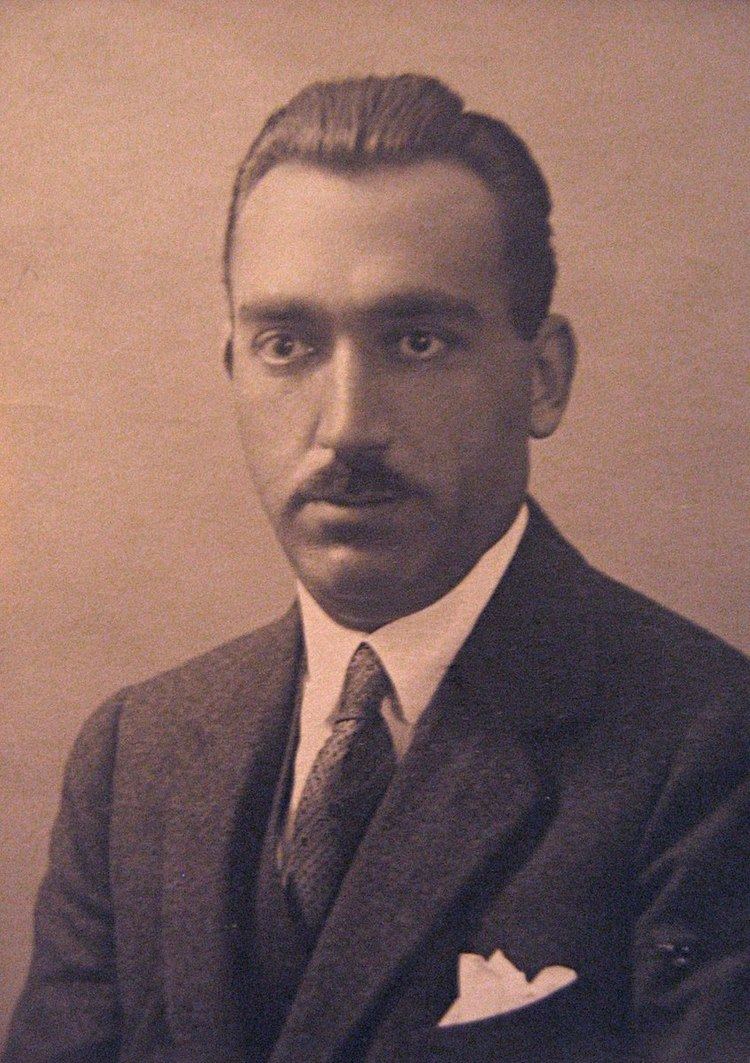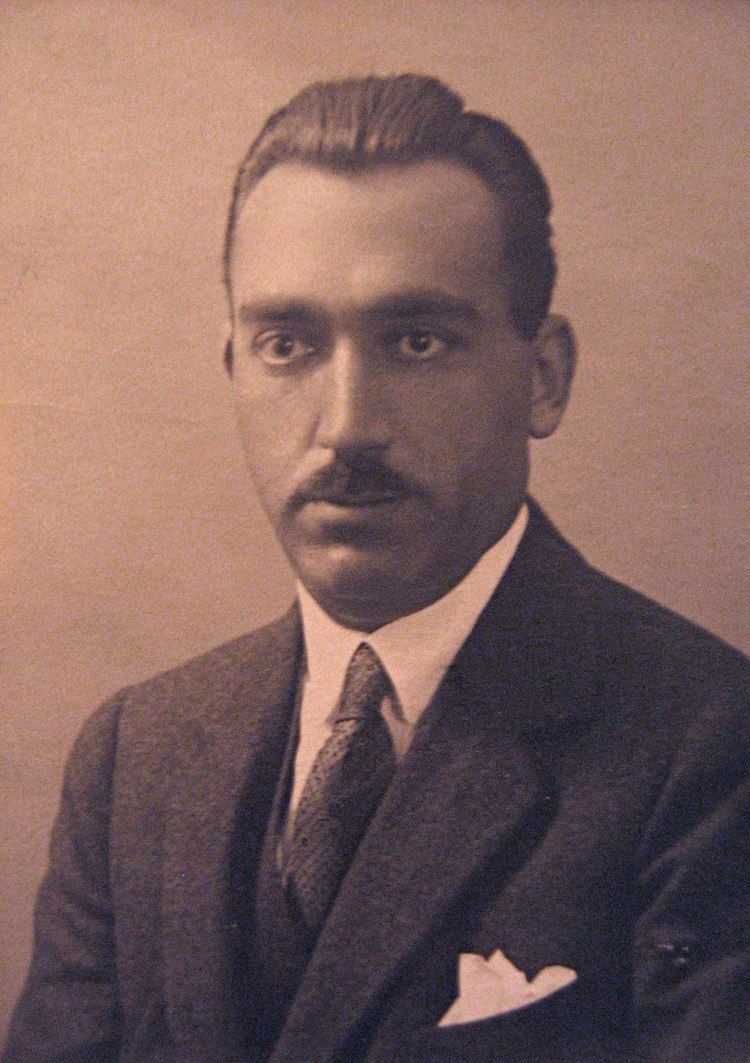Full name Enea Bossi Role Aviator Name Enea Sr. | Spouse Flora Kehrer Nationality Italian, American | |
 | ||
Born March 29, 1888Milan ( 1888-03-29 ) Known for | ||
Enea Bossi Sr. (29 March 1888 – 9 January 1963) was an Italian-American aerospace engineer and aviation pioneer. He is best known for designing the Budd BB-1 Pioneer, the first stainless steel aircraft; and also the Pedaliante airplane, disputably credited with the first fully human-powered flight.
Contents
- Personal life
- Professional career
- American Aeronautical Corporation
- Budd Company
- Pedaliante
- Later work
- References

Personal life
Enea Bossi was born in Milan, Italy. He emigrated to the United States on the RMS Oceanic from Cherbourg, France, on 20 July 1914, subsequently residing at 264 Riverside Drive in Great Neck, New York. Bossi declared his intention to become a citizen of the United States on 30 July 1914 and petitioned for naturalization on 9 December 1925. He became a naturalized United States citizen on 16 March 1926, though his two sons retained their inherited Italian citizenship, jus sanguines, as well their American citizenship, jus soli. He spoke fluent Italian, French, and English.
Bossi married Flora Kehrer, a Swiss German from Lausanne who had migrated to the United States immediately prior to the outbreak of World War I and was living with her aunt and uncle in Connecticut. The two met through Enea Bossi’s professional relationship with her uncle, and the two eloped against the wishes of Flora's guardians. The couple had two children, Charles Bossi (born 1922 in New York City, d. 1989 in Ohio) and Enea Wilbur Bossi. (born 1924 in Montclair, New Jersey, died 1999). They ultimately resided on Upper Mountain Avenue in Montclair, at its intersection with Watchung Avenue, and maintained a country house on North Wales Road in Lansdale, Pennsylvania. The Montclair house still exists, but the Lansdale residence has since been replaced by subdivided residential homes, located opposite the Montgomery Mall.
Professional career
Bossi graduated from the Instituto Tecnico in Lodi, Italy, in 1907, specializing in physics and mathematics. The Wright brothers’ Flyer, having successfully flown in December 1903, impressed Bossi so much that he devoted himself to aviation, becoming the second licensed pilot in Italy. Financed by his father, in 1908 he designed and built his own plane, modeled after the Wright Flyer. Bossi also used the plane to teach both himself and Giuseppe M. Bellanca how to fly. This design won a silver medal the following year at the first international aviation meeting in Reims, France. The plane became the first Italian-designed airplane to be built, and in Bossi’s own factory.
In early December 1909, the first flight of an Italian-designed and built aircraft was successfully completed alongside fellow engineers Giuseppe M. Bellanca and Paolo Invernizzi. Also in 1909, Bossi developed the first landing gear braking system as well as the Italian Navy’s first seaplane.
During the early 1910s, Bossi served as an Italian representative of Curtiss Aeroplane and Motor Company – securing rights for local license production of the Curtiss Model F by the Zari brothers, who built eight examples at their workshop in Bovisia (it) (today a zone of Milan). The first of these was demonstrated to the Italian Navy on Lake Como on 22 September 1914. During this decade, Bossi also worked for the Aviation Corps, assisting the Italian government with building and organizing its naval air forces.
During World War I, Bossi served as both a bomber pilot and a flight instructor for the Italian Navy. Due to the economic and social difficulties in Italy following the war, in 1918, Bossi emigrated to the United States, where he eventually became a naturalized citizen. In the 1920s, Bossi worked on a number of devices relating to fuel systems – leading to work in his later years on modern aerial refueling systems.
In 1927, Bossi was a cofounder of the company Société Continentale Parker in France together with Robert Deté, Louis Paulhan and Pierre Prier. The purpose was to transfer surface treatment technologies for the spreadling aerospace industry to Europe. Using his relationships he brokered a licence from Parker Rust-Proof in Detroit Parkerizing and in a later step the distribution rights of Udylite Corp for specialty chemicals in Electroplating. The company later became the European market leader in surface treatment via its successor organizations Chemetall GmbH and Coventya GmbH.
American Aeronautical Corporation
In October 1928, Bossi founded the American Aeronautical Corporation (AAC), officially located at 730 Fifth Avenue in Port Washington, New York, to build Savoia-Marchetti seaplanes under license. Licenses were acquired for both the S-55 and the S-56 and both were tested at the Miller Army Air Field, but only the latter made it to production. The S-56 became the first plane used by the New York City Police Department, which used it to enforce flying regulations, assist with sea rescues, and to chase rum-runners during the Prohibition era. A follow-up design, the more-powerful S-56B, proved even more successful. Whereas the prices for the S-56 and S-56B were modest for the time, the Great Depression caused sales to drop significantly by 1933. Two original AAC S-56 planes exist today: one of which is on display at the Cradle of Aviation Museum in Garden City, New York.(photos)
Bossi’s work was not without its setbacks. In early 1930, he survived the crash of an experimental S-56 off Port Washington which claimed the life of test pilot Peter Talbot. Bossi was rescued by the Coast Guard’s ship CG-162.
Budd Company
The Edward G. Budd Manufacturing Corporation, of Philadelphia, Pennsylvania, was a major manufacturer of railroad cars, which resulted in significant experience in working with stainless steel. In 1930, the company made its first foray into the aviation industry by signing contracts to manufacture aircraft wheels & stainless steel wing ribs. A close friend of Edward Budd, Enea Bossi joined the company as the head of stainless steel research to supervise the design and construction of the 4-seat Budd BB-1 Pioneer – the first aircraft with a structure built out of stainless steel (photo). Occurring in 1931, this was the first aircraft for the Budd Company. Built under Restricted License NR749, its design utilized concepts developed for the Savoia-Marchetti S-31 and was powered by a single 210 horsepower (160 kW) Kinner C-5 motor.
The stainless steel construction process for the BB-1 was patented in 1942. At the time, stainless steel was not considered practical; and only one BB-1 was built. In 1934, this plane was stripped of its fabric covering and mounted outside the Franklin Institute in Philadelphia, where it remains to this day as the longest continuous display of any airplane. The plane has been memorialized in the children’s book Spirited Philadelphia Adventure by Deirdre Cimino. In 1931, Bossi sold the controlling interest of the AAC to Dayton Airplane Engine Company. The success which came from the technical innovations of the BB-1 prompted the Budd Company to employ Bossi as its European representative.
Pedaliante
In 1932, Bossi heard of an airplane which had successfully flown while powered only by a 1-horsepower (0.75 kW) engine. This prompted Bossi to calculate the minimum power that a manned aircraft would need to fly. The calculation yielded a value of approximately 0.94-horsepower (0.70 kW), which convinced Bossi that Human-powered flight might be possible. During a trip to Philadelphia, Bossi tested the speed at which a glider would take off under tow. The experiment consisted of hiring a professional bicyclist to tow a glider. A spring scale was attached to the tow line to sense the force exerted by the bicyclist. This same experiment procedure was later repeated as part of the development of the Gossamer Condor and the Gossamer Albatross. The results confirmed that a speed at which the necessary lift could be obtained was indeed attainable.
A second experiment conducted during a trip to Paris involved a propeller-driven bicycle designed by Bossi. The test rider achieved a speed of 23 miles (37 km) per hour, but one drawback was noted: the gyroscopic effect of the propeller generated so much torque that the bicycle became unstable. Bossi concluded, erroneously, that a successful human-powered aircraft would therefore require two counter-rotating propellers to cancel out the effects of torque – similar to the design of a helicopter. In light of these findings, Bossi decided to design an aircraft incorporating this difficult requirement.
In 1933, the Frankfurt Polytechnische Gesellschaft (Frankfurt Polytechnic Society) offered a prize to promote human-powered flight. During this period, many German activities were copied by Italy, and in 1936 the Italian government offered an equivalent contest: offering 100,000 lire for a 0.62 mile (1 kilometer) human-powered flight made by an Italian citizen. Bossi was aware that he could not receive the prize due to his American citizenship, but he opted to attempt to win it, anyway.
Bossi’s design for the contest was named the Pedaliante, Italian for “Pedal Glider” – so named because it utilized conventional glider configuration and construction. The design was introduced in 1937 and Vittorio Bonomi, an Italian sailplane manufacturer, was contracted to build the plane. Bossi and Bonomi enlisted Emilio Casco to pilot the Pedaliante. Casco was a major in the Italian Army and a very strong bicyclist. After several weeks of trials in early 1936, Casco took off in the Pedaliante and flew approximately 300 feet (91.4 m) completely under his own power, marking the first achievement of an aircraft obtaining and sustaining flight completely via human power. Although subsequent calculations have verified that this flight was physically possible, most agree that it was Casco’s considerable physical strength and endurance which performed the accomplishment; not a feat which could be attained by a typical person.
Incorporating a catapult launch to a height of 30 feet (9 m), the Pedaliante made a flight on 13 September 1936 which traveled several hundred meters. On 18 March 1937, at Cinisello airport near Milan, the plane was launched at a height of 29.5 feet (9 m) and Casco successfully pedaled the craft for its full 0.62 miles (1 km). This set a world record for human-powered flight, but as a catapult launch was not permitted in the rules of the competition, the Pedaliante did not win the prize for which it was designed. The plane was retired the following year having made a total 80 flights – 43 without the assistance of a catapult launch. At this time, the Mufli and the Pedaliante were the most advanced Human-powered aircraft ever built.
Later work
Initially developed at Delgado Trades School and completed by Enea Bossi, the two-place side-by-side single-rotor Higgins EB-1 helicopter was completed in 1943 and built by Higgins Industries, Inc., of New Orleans, Louisiana. Plans for larger versions were terminated following the downturn in the military aviation industry following the end of World War II. The fuselage was covered in its entirety by a metallic skin, with the tail covered in fabric. A two-bladed vertical tail rotor was included in its design to counter the effects of torque and the landing gear was configured in a fixed tricycle form. The four-bladed main rotor consisted of two pairs of blades mounted one above the other. The interior featured controls similar to those of a conventional airplane.
Bossi further developed helicopter technology, particularly with regard to contra-rotating dual propellers and tail rotors – work which was also, to a limited degree, furthered by his two sons.
Bossi, a resident of West Orange, New Jersey, died on 9 January 1963, at the age of 74 at Miami Valley Hospital while visiting a friend in Dayton, Ohio.
